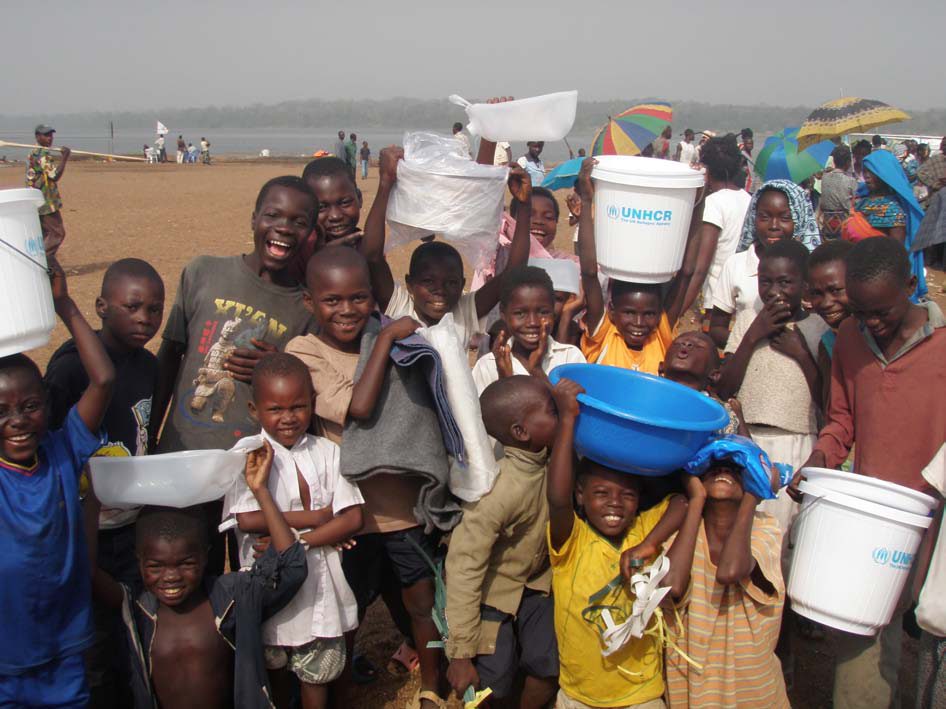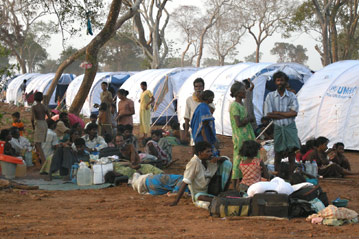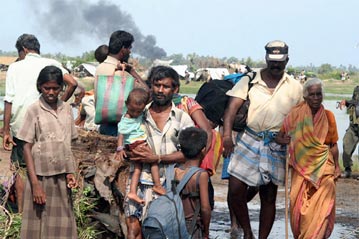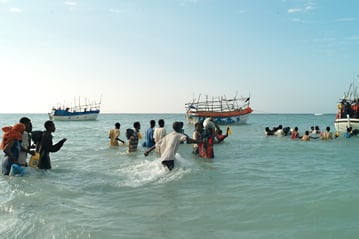Refugees from Bhutan embrace new life with hope and anxiety
Refugees from Bhutan embrace new life with hope and anxiety

DAMAK, Nepal, March 25 (UNHCR) - More than 100 refugees from Bhutan left their camps in Nepal over the weekend for onward travel to the United States, kicking off one of the world's largest resettlement operations.
The weekend movement of refugees to the Nepali capital, Kathmandu, was the largest since the resettlement process started in November last year. From Kathmandu, they are catching international flights to different American cities this week.
More than 107,000 refugees from Bhutan have been living in seven camps in eastern Nepal since they fled ethnic tensions in Bhutan in the early 1990s. For 17 years, they waited for a chance to go home, but grew increasingly frustrated after 15 unsuccessful rounds of talks between Nepal and Bhutan on repatriation.
"We chose to resettle because there was no other outlet," said Jay Narayan Adhikari, 37, who was among the first to leave from Sanischare camp. "Talks between Nepal and Bhutan have produced no results."
His wife Sita, 33, was worried about their move. "Everyone says America, America, America, but I don't know much about it. It's only for the sake of the children that we are ready to go."
Their daughter Jamuna, the eldest of three children at 16 years, could barely hide her excitement. "I'm in Class 10 and have never seen a computer. It's embarrassing in this modern world. What we learn in school here is only theoretical, so I would like to go to America to further my studies."
A few blocks away, the roles were reversed. The Bajgais had to travel separately due to their family's large size. Chandra Lal Bajgai, 24, would leave with his two sisters first, and the rest would follow later. The girls bawled as they packed their bags, only to be comforted by their mother: "Why are you crying? We have nothing here anyway. We will join you soon, our future will be brighter there."
On departure day, the families emerged from their huts with puffy eyes and weary smiles. They were joined by friends and neighbours as they lugged their bags to the pick-up point from where they would be bussed to the nearest airport. The crowd grew to more than 2,000 people, all coming to wish them well.
From the Bhadrapur airport in eastern Nepal, the families flew to Kathmandu, where they stayed at the International Organization for Migration's transit centre while waiting for their flight out to the US.
"I didn't sleep last night. I was crying and shivering, worrying about my family back in the camp," said Sita Adhikari before boarding the Sunday flight that would eventually take her to the state of Arizona. Anxieties aside, she has already started to adjust to her new life, replacing her traditional shalwar kameez outfit with jeans and a blouse, topped off with sunglasses.
There may be uncertainties ahead - everyone in the group stumbled as they used the airport escalator for the first time in their lives - but with each step, they are moving closer to a new life with new adventures and opportunities.
More than 200 refugees from Bhutan are expected to leave Nepal by the end of March and over 10,000 by the end of the year to resettlement countries such as the US, Canada, Australia, New Zealand, Denmark, the Netherlands and Norway.
A total of 25,000 refugees have so far registered for resettlement. The UN refugee agency has submitted more than 12,000 names for consideration by resettlement countries, mainly the US. More refugees are expected to come forward for resettlement after they hear of how the first groups integrate in their new homes.
By Vivian Tan in Damak and Kathmandu, Nepal








